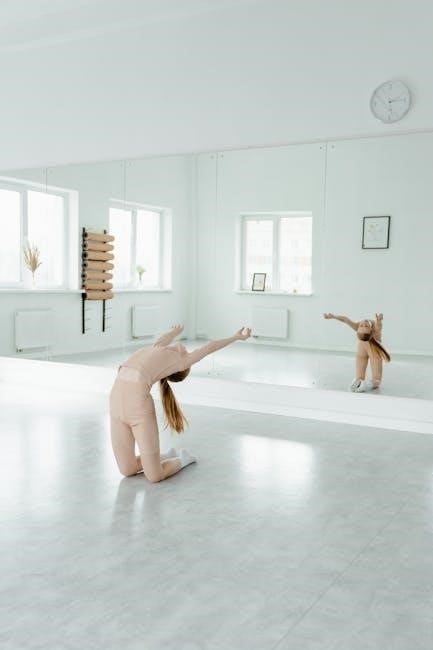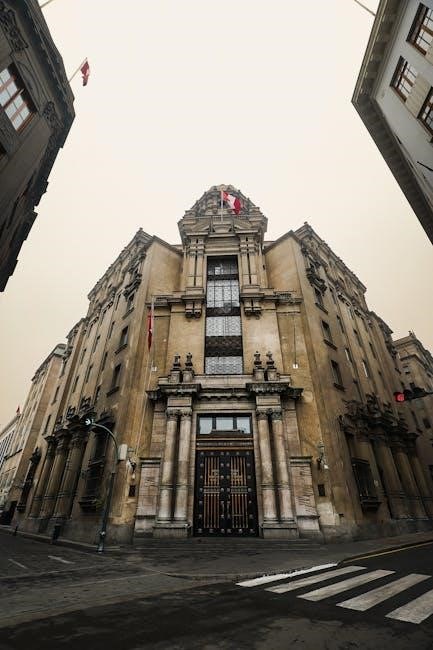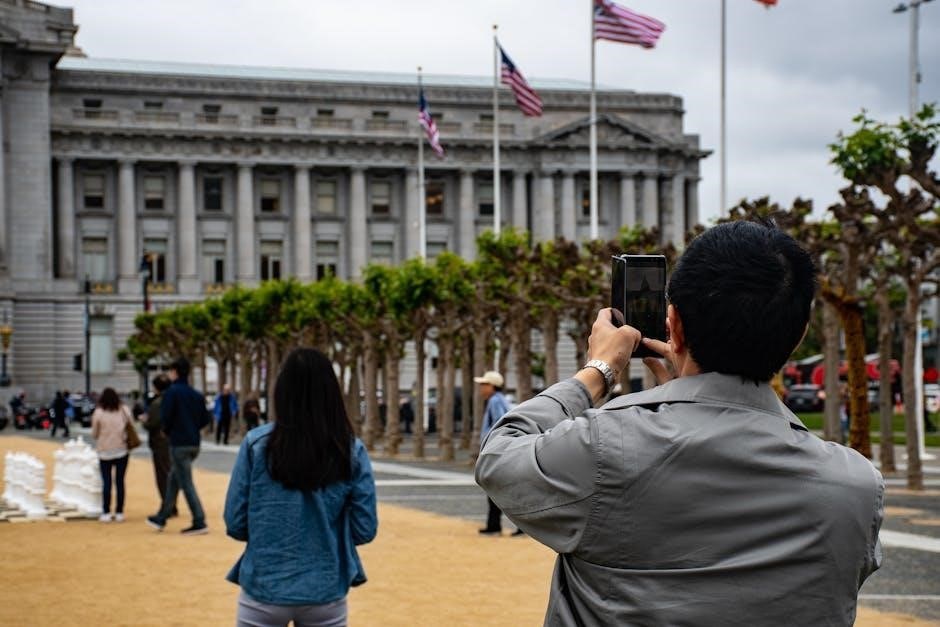Restorative Yoga (RY) is a holistic practice using props to support the body in relaxing postures, promoting deep relaxation, rejuvenation, and mental calm. It stimulates the relaxation response, helping to balance the nervous system and reduce stress. RY sequences, often available as downloadable PDF guides, offer structured practices tailored to specific needs, such as stress relief, back pain, or energy restoration. This gentle, therapeutic approach is accessible to all, regardless of yoga experience or physical limitations.
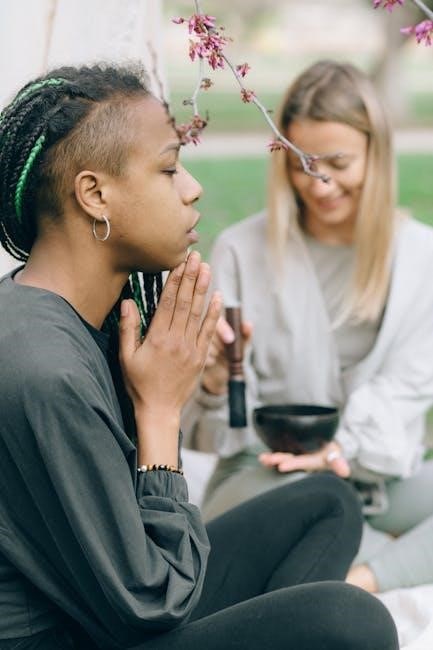
What is Restorative Yoga?
Restorative Yoga is a therapeutic practice that uses props like bolsters, blankets, and blocks to support the body in relaxing postures. These poses are designed to promote deep relaxation, rejuvenation, and mental calm by stimulating the body’s relaxation response. Unlike active yoga practices, Restorative Yoga focuses on stillness and comfort, allowing the body to release tension and restore energy. Each pose is typically held for 5-20 minutes, encouraging the nervous system to unwind and the mind to quiet. This gentle approach is accessible to everyone, regardless of yoga experience or physical limitations, making it a powerful tool for stress relief, healing, and overall well-being.
Benefits of Restorative Yoga for Mind, Body, and Soul
Restorative Yoga offers numerous benefits for the mind, body, and soul. It reduces physical tension, improves circulation, and enhances flexibility. By promoting deep relaxation, it helps alleviate stress, anxiety, and insomnia. The practice also supports immune function, lowers blood pressure, and rejuvenates energy levels. Mentally, it fosters clarity, calmness, and emotional resilience. Regular practice can improve overall well-being, creating a sense of balance and harmony. This therapeutic approach is particularly beneficial for individuals seeking to manage chronic stress, recover from illness, or simply nurture their health. Its holistic benefits make it a powerful tool for transforming both physical and mental health.
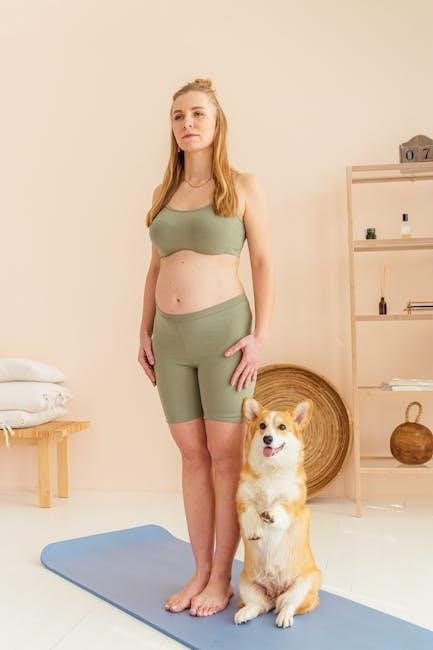
Key Principles of a Restorative Yoga Sequence
Restorative Yoga sequences emphasize support, relaxation, and breath awareness. Props like bolsters and blankets are used to create comfort, allowing the body to surrender deeply. Poses are held for extended periods to facilitate relaxation and rejuvenation. The environment is calm and nurturing, encouraging a meditative state. These principles ensure a safe, therapeutic, and transformative experience for practitioners of all levels, fostering balance and well-being.
Use of Props for Support and Comfort
Props are essential in restorative yoga to provide support and ensure comfort during extended holds. Bolsters, blankets, blocks, and straps are commonly used to maintain proper alignment and relaxation. These tools allow the body to surrender deeply into poses without strain, fostering a calming and therapeutic experience. For example, bolsters support the spine in reclined postures, while blankets cushion joints and maintain warmth. Blocks help in modifying poses to suit individual needs, ensuring accessibility for all practitioners. The strategic use of props creates a nurturing environment, enabling the body to fully relax and rejuvenate. This support system is a cornerstone of restorative yoga, enhancing its benefits for both mind and body.
Duration of Poses for Maximum Relaxation
In restorative yoga, the duration of each pose is crucial for achieving maximum relaxation and therapeutic benefits. Poses are typically held for 5 to 20 minutes, allowing the body to fully surrender and the nervous system to shift into a relaxed state. This extended hold enables the muscles to release deep-seated tension, promoting circulation and reducing stress. The longer duration also encourages mental calmness, as the mind learns to focus and settle. Proper timing ensures that each pose is both effective and comfortable, making it an essential element of a restorative practice. This approach helps practitioners achieve a profound sense of balance and renewal.
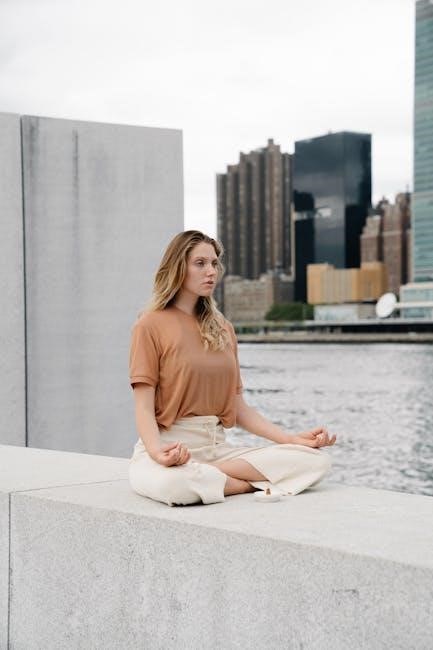
How to Create a Restorative Yoga Sequence
To create a restorative yoga sequence, start with a clear intention and purpose. Use props like bolsters, blocks, and blankets to support the body in relaxing postures. Select poses that promote relaxation, balance, and rejuvenation, ensuring a logical flow from one pose to the next. Consider the duration of each pose, aiming for extended holds to deepen relaxation. Adjust the sequence based on individual needs, such as stress relief, energy restoration, or therapeutic benefits. This thoughtful approach ensures a nurturing and effective practice tailored to specific goals.
Choosing Poses for Specific Needs
When selecting poses for a restorative yoga sequence, consider the individual’s specific needs and goals. For stress relief, include supported forward folds like Child’s Pose or Seated Forward Bend to calm the nervous system. Reclined twists, such as Reclined Spinal Twist, can help release tension in the spine and improve digestion. For energy restoration, incorporate backbends like Supported Bridge Pose to open the chest and enhance breathing. Legs-Up-The-Wall Pose is ideal for reducing swelling and promoting relaxation. Always modify poses to accommodate injuries or physical limitations, using props like bolsters, blankets, and blocks for comfort. The key is to tailor the sequence to address specific concerns, ensuring each pose supports the desired therapeutic outcome.
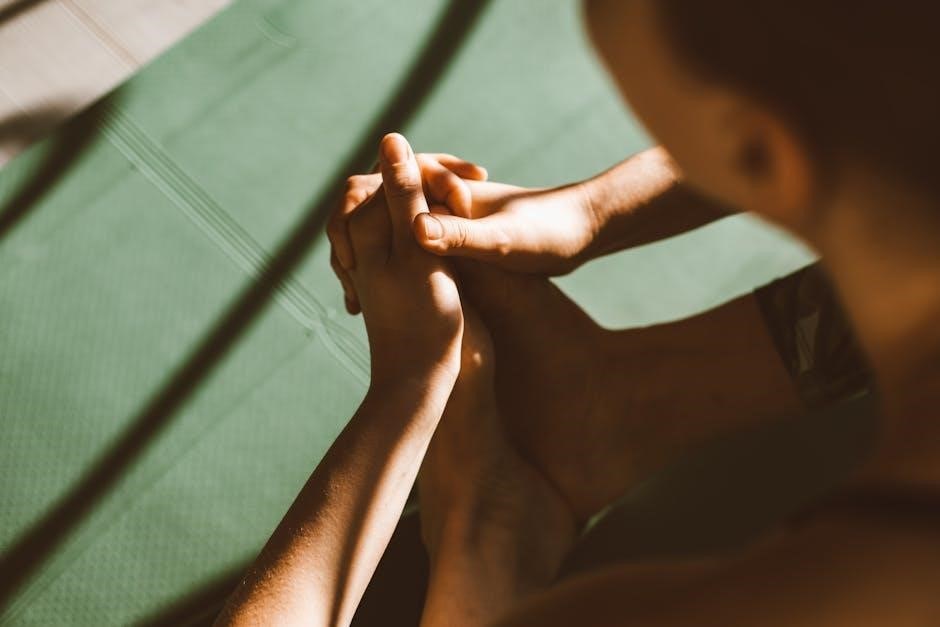
Modifications for Different Body Types and Injuries
To ensure a safe and effective restorative yoga practice, modifications are essential for accommodating different body types and injuries. For shoulder injuries, avoid deep chest-opening poses and use blocks or straps for support in seated postures. For lower back pain, opt for gentle twists or supported Child’s Pose instead of deep forward folds. Hip injuries may require using bolsters under the knees in Reclined Pigeon Pose to reduce strain. For taller or larger bodies, extend pose durations and add extra props like blankets or pillows for comfort. Always prioritize alignment and comfort, adjusting props as needed to support the body fully. Modifications ensure the practice is accessible, safe, and beneficial for all.
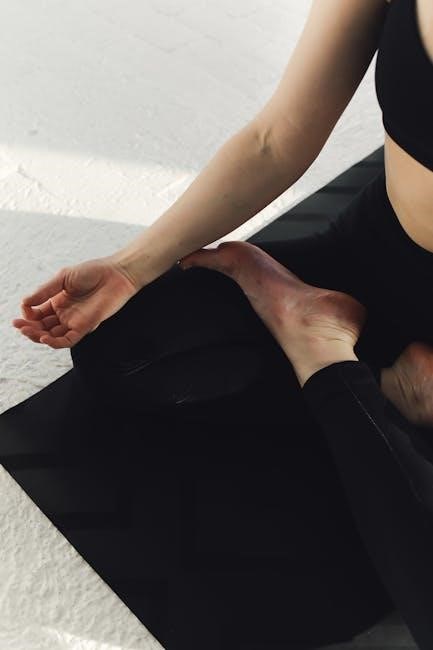
Popular Restorative Yoga Poses
Restorative yoga features poses like Supported Forward Fold and Reclined Twist, which promote deep relaxation and spinal release. These therapeutic postures, supported by bolsters and blankets, are designed to rejuvenate the body and mind, making them favorites in restorative sequences.
Supported Forward Folds for Deep Relaxation
Supported Forward Folds are a cornerstone of restorative yoga, offering profound relaxation and relief from tension. By using props like bolsters or blankets under the torso, these poses allow the body to release deeply without strain. The gentle stretch in the hamstrings and calves promotes blood flow, while the surrender of the chest and shoulders encourages a calming effect on the nervous system. These folds are particularly beneficial for relieving stress and promoting a meditative state. They can be adapted to suit all levels by adjusting the height of support, ensuring comfort and accessibility for everyone. Regular practice enhances flexibility and overall well-being.
Reclined Twists for Spinal Release
Reclined Twists are a powerful yet gentle restorative yoga pose that promotes spinal flexibility and relaxation. By lying on the back and gently twisting the torso with support from bolsters or pillows, these poses release tension in the spine, shoulders, and hips. The twist encourages a soothing stretch in the muscles, improving mobility and circulation. This pose is particularly beneficial for relieving lower back pain and enhancing breathing by opening the chest. Proper support ensures the body can relax deeply, allowing the nervous system to calm and the mind to unwind. Regular practice of Reclined Twists can improve posture, reduce muscle tension, and leave you feeling refreshed and centered.

Downloading a Restorative Yoga Sequence PDF
Easily access free restorative yoga sequence PDFs online, offering detailed poses, props, and instructions for a rejuvenating home practice tailored to all levels and needs.
Where to Find Reliable and Free Resources
Finding reliable and free restorative yoga sequence PDFs is straightforward. Websites like Iyengar Yoga Shala Amsterdam, YogaDura, and GeorgeWatts.org offer high-quality, downloadable resources. These sites provide carefully crafted sequences, often created by experienced instructors, ensuring safety and effectiveness. Additionally, platforms like YogaPose4You and LeeannCarey.com share comprehensive guides, including images and detailed instructions. Many yoga communities and blogs also offer free PDFs, catering to various needs such as stress relief, back pain, and energy restoration. Always verify the credibility of the source to ensure the sequences are suitable for your practice level and physical condition.
How to Use a PDF Guide for Home Practice
Using a restorative yoga sequence PDF for home practice is simple and effective. Begin by downloading the guide and reviewing the sequence, ensuring you have all necessary props like bolsters, blankets, and blocks. Create a quiet, comfortable space and set a timer for pose durations. Follow the guide’s instructions step-by-step, holding each pose for the recommended 5-20 minutes to allow deep relaxation. Adjust poses as needed for comfort, using additional props if required. After completing the sequence, take a few moments for breath awareness or meditation to enhance the calming effects. Regular practice with the PDF guide can help you establish a consistent, rejuvenating restorative yoga routine at home.
Restorative yoga offers profound relaxation and rejuvenation. For a fulfilling practice, prioritize consistency, create a quiet space, and use props to enhance comfort. Embrace patience and self-care.
Importance of Consistency in Restorative Practice
Consistency is key to experiencing the full benefits of restorative yoga; Regular practice helps deepen relaxation, improve flexibility, and enhance overall well-being. By committing to a consistent routine, you allow your body and mind to adapt and respond positively to the sequences. Over time, this leads to better stress management, improved sleep, and increased energy levels. Incorporating restorative yoga into your daily or weekly schedule ensures long-term benefits and fosters a stronger connection to your inner self. A steady practice also supports the body’s natural healing processes, making it essential for maintaining balance in a busy lifestyle.
Encouraging Self-Care Through Restorative Yoga
Restorative yoga embodies a profound practice of self-care, nurturing both body and mind. By creating a supportive environment with props, individuals can surrender to deep relaxation, fostering emotional and physical renewal. This practice encourages mindfulness, allowing practitioners to reconnect with their inner selves and cultivate compassion. Regular restorative yoga helps reduce stress, improve sleep quality, and boost overall well-being. It serves as a powerful reminder to prioritize self-care, offering a sanctuary from the demands of daily life. By integrating restorative yoga into their routine, individuals can embrace a holistic approach to health and vitality, empowering them to live more balanced and fulfilling lives.
